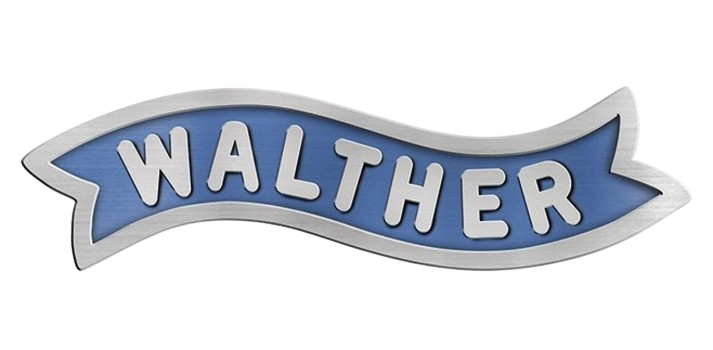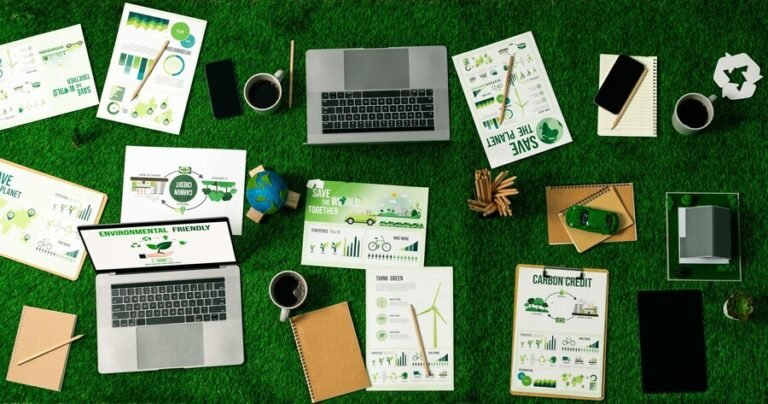The rise of eco-consciousness has penetrated nearly every industry, and the web design world is no exception. As concerns about environmental impact grow, the concept of sustainable web design has come to the forefront. A sustainable web design trend is shaping how websites are built and maintained with a focus on reducing energy consumption, improving efficiency, and lowering their carbon footprint. As the internet becomes an even more integral part of our lives, it’s essential that the digital world evolves toward more sustainable practices. This article will dive into the sustainable web design trend and showcase digital design examples that lead the way in creating a greener digital landscape.
What is the Sustainable Web Design Trend?
Sustainable web design is an emerging trend in the digital world focused on creating websites with minimal environmental impact. It blends design principles with practical techniques aimed at reducing energy consumption, decreasing waste, and making the internet more sustainable for future generations.
This trend covers multiple aspects of web design:
- Energy-efficient websites that consume less server power
- Reduced carbon footprints by using eco-friendly servers and optimized code
- Minimalistic design that focuses on faster load times and resource efficiency
As more businesses adopt sustainable practices, sustainable web design trend becomes a priority. The key goal is to create web experiences that are not only user-friendly but also kind to the planet.
Why is Sustainable Web Design Important?
Websites, as digital entities, may seem immaterial, but they contribute to real-world energy consumption and environmental challenges. Servers and data centers hosting websites consume vast amounts of energy, most of which comes from non-renewable sources. Furthermore, the growing complexity of websites—through larger files, multimedia, and interactive elements—has led to greater energy usage.
The sustainable web design trend aims to mitigate these negative impacts by making websites as energy-efficient as possible. It encourages the use of renewable energy in web hosting, optimized code, and design strategies that reduce energy usage without sacrificing performance.
Implementing these practices not only helps reduce the environmental footprint but also provides long-term benefits such as:
- Faster loading times for better user experience
- Improved SEO as speed is a ranking factor
- Cost savings through reduced server load and maintenance
Key Elements of Sustainable Web Design
A sustainable web design trend involves various elements that, when combined, create an eco-friendly, efficient website. Let’s explore the major components of sustainable web design:
Eco-Friendly Web Hosting
The foundation of any sustainable website is eco-friendly web hosting. Traditional web hosting services rely on data centers that consume large amounts of energy. However, an increasing number of hosting providers are using renewable energy sources to power their servers.
Examples of eco-friendly hosting services include:
- GreenGeeks: For every kilowatt of energy consumed, they put three times that amount back into the grid in the form of renewable energy.
- SiteGround: Known for utilizing sustainable energy practices in their data centers.
- A2 Hosting: Runs data centers powered by renewable energy sources like wind and solar.
Choosing a hosting provider that prioritizes renewable energy is a key step in reducing the environmental impact of a website.
Optimizing Code and Reducing Data Consumption
A key feature of the sustainable web design trend is optimizing websites for better performance. Optimized code is lighter and faster, requiring fewer server resources and thus less energy to load.
Best practices include:
- Minimizing HTTP requests: Reducing the number of elements on a webpage can decrease server load and speed up page load times.
- Compressing images and files: This reduces the amount of data that needs to be transferred when a user visits the site.
- Lazy loading: This allows images and videos to load only when they are about to be viewed, reducing initial load times.
These small yet powerful adjustments contribute to energy savings while improving the user experience.
Minimalistic Web Design
A minimalist approach to web design helps reduce the number of assets required to display a page. The sustainable web design trend favors clean, simple, and functional designs over overly complex layouts that use excessive graphics and heavy coding. By adopting a minimalistic design, websites load faster, require fewer resources, and offer users a more intuitive browsing experience.
Key features of a minimalist design include:
- Fewer images and animations
- Simplified typography and layout
- Efficient use of whitespace
By cutting back on unnecessary elements, websites not only become more sustainable but also faster and more accessible.
Dark Mode for Energy Efficiency
Dark mode is gaining popularity, and it’s not just a trendy feature—it’s also more sustainable. On OLED and AMOLED screens, dark backgrounds require less power than bright, white backgrounds. This simple design choice helps reduce the energy consumption of users’ devices, particularly mobile phones and tablets.
As part of the sustainable web design trend, many websites are now offering dark mode as a default option or giving users the ability to toggle between dark and light modes.
Examples of Digital Design Innovations for Sustainability
Several brands and organizations are pioneering the sustainable web design trend with their eco-friendly digital designs. Here are a few digital design examples that illustrate how businesses are integrating sustainability into their websites:
Patagonia
Patagonia is known for its commitment to sustainability, and its website follows suit. The Patagonia website focuses on minimalism, with an emphasis on simplicity and user-friendly navigation. The site is optimized for performance, reducing page load times, and uses eco-friendly hosting. Patagonia’s digital design is a perfect example of how a sustainable web design trend can align with a company’s broader environmental goals.
IKEA Sustainability Hub
IKEA’s Sustainability Hub is a digital space that showcases the company’s commitment to sustainability. The website is designed to be resource-efficient and uses clean, minimalist design principles to reduce energy usage. By offering easy-to-navigate content and focusing on core features, the website ensures an optimal user experience while contributing to sustainability.
The Nature Conservancy
The Nature Conservancy’s website is designed to highlight its environmental mission, and it practices what it preaches by embracing sustainable web design. The website uses green hosting, minimizes its data usage, and loads quickly due to optimized code. It demonstrates how organizations can use digital design as an effective tool to drive their environmental message and lead by example in terms of sustainability.
How to Implement the Sustainable Web Design Trend
For businesses and designers looking to adopt sustainable web design practices, there are several actionable steps to take:
- Choose a green hosting provider that uses renewable energy and eco-friendly practices.
- Optimize images and code to improve load times and reduce energy consumption.
- Adopt minimalist design principles that reduce unnecessary assets and improve site speed.
- Implement dark mode or offer it as an option to users.
- Track carbon emissions with tools like the Website Carbon Calculator to identify areas of improvement.
By incorporating these practices, you can make your website more sustainable while improving its performance and user experience.
Conclusion
As the sustainable web design trend continues to evolve, the need for energy-efficient, eco-friendly websites becomes more pressing. By integrating practices like optimized code, minimalistic design, green hosting, and dark mode, designers can create digital spaces that are not only user-friendly but also kind to the planet. Businesses that adopt these practices not only reduce their environmental footprint but also demonstrate their commitment to sustainability, appealing to eco-conscious consumers.
As the digital world grows, it’s vital that we ensure the internet evolves with sustainability in mind. By following the examples set by leading organizations and embracing digital design examples focused on sustainability, we can collectively contribute to a greener, more efficient online ecosystem.

